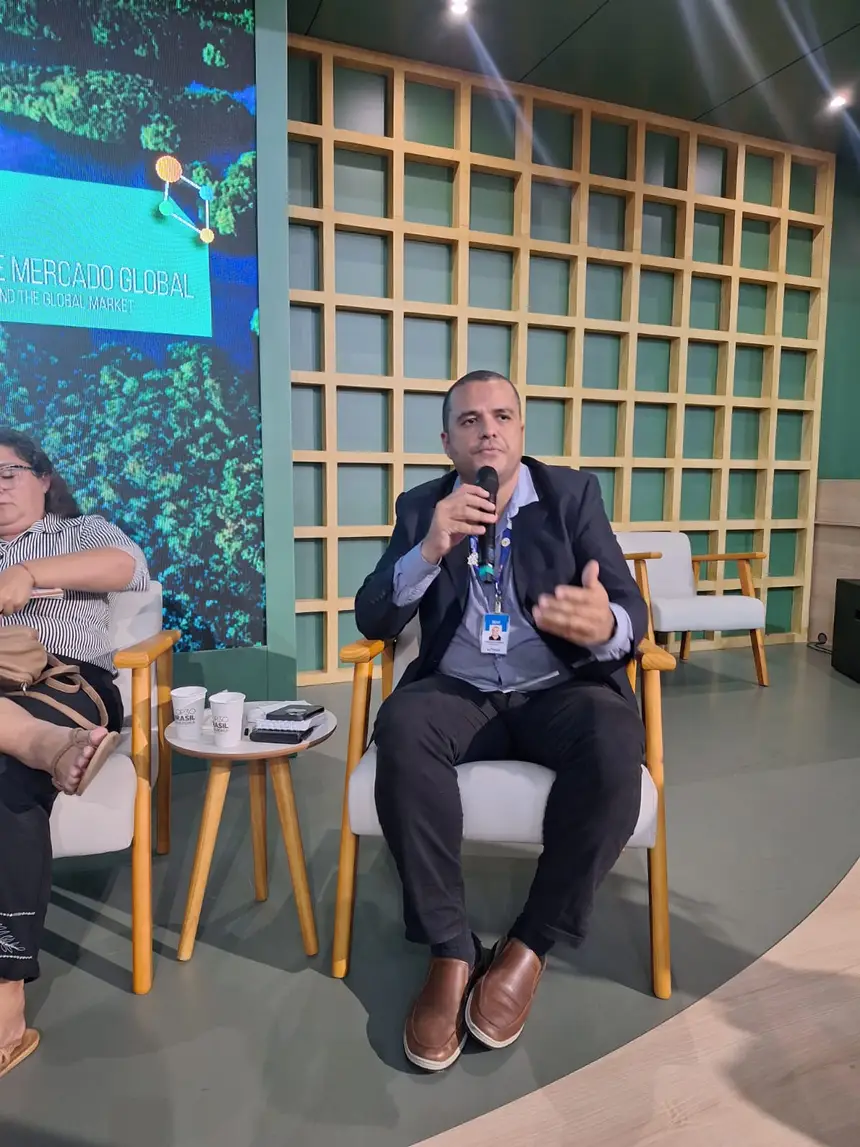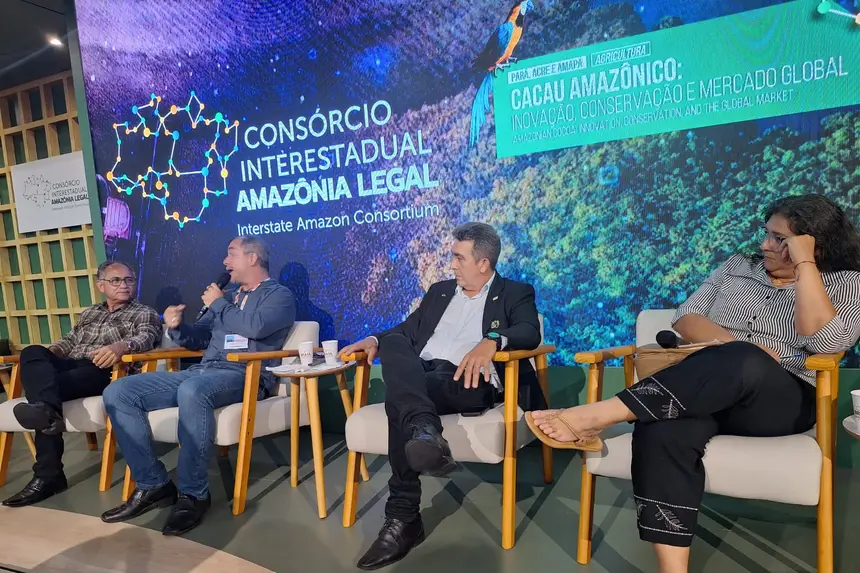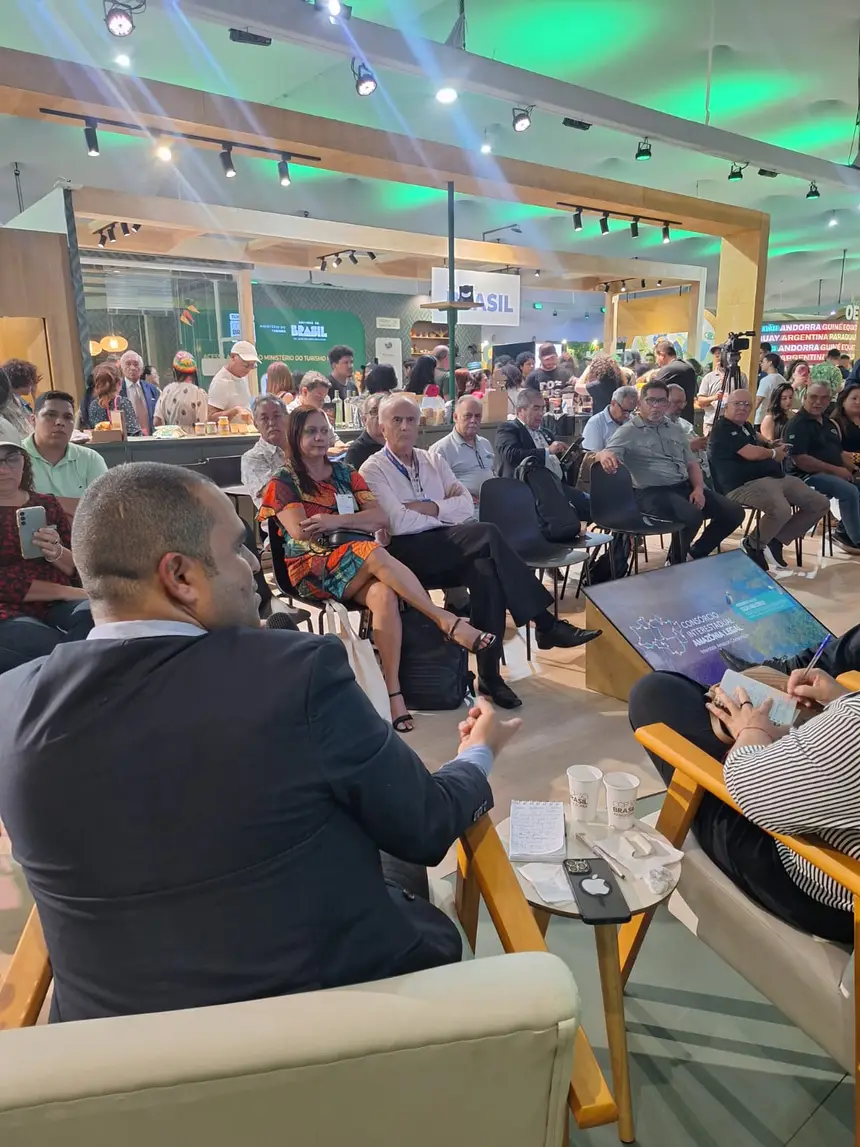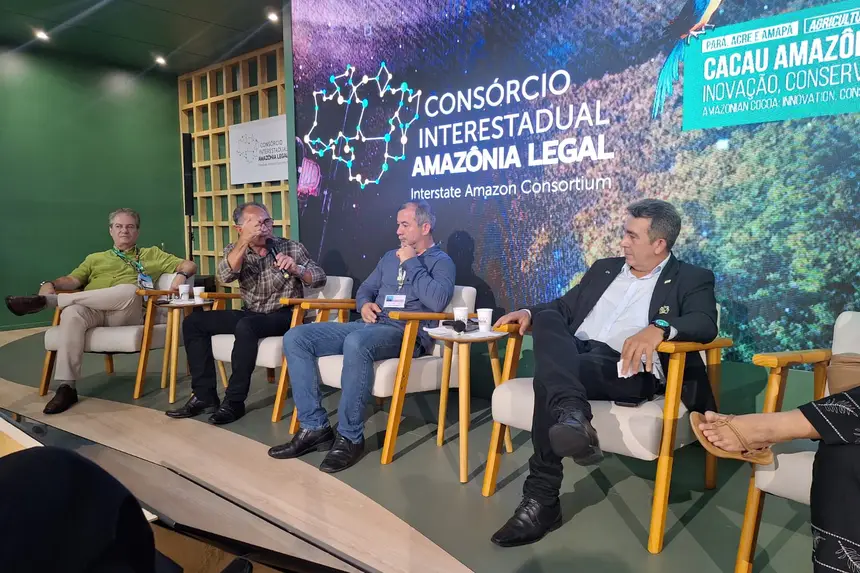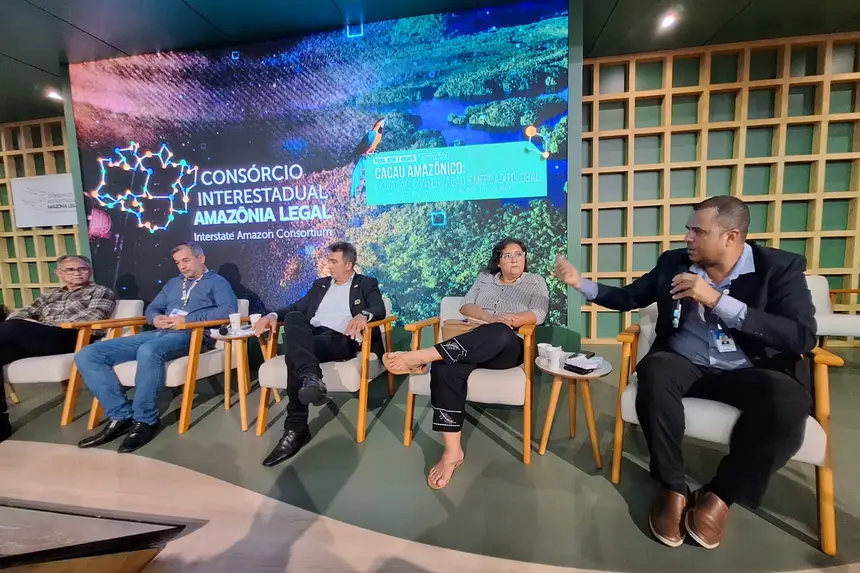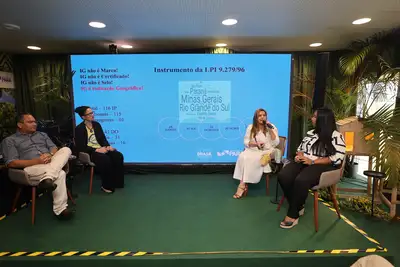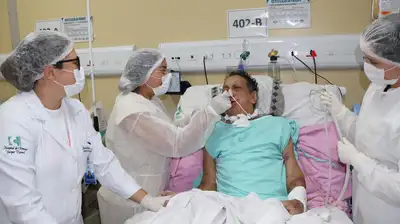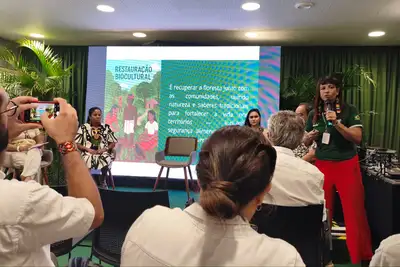Pará discusses the production chain, innovation, and global market of cocoa at COP 30
Director of the State Secretariat for Family Agriculture of Pará, Anderson Serra, advocates for the expansion of cocoa farming on sustainable agroforestry bases
The production of ‘Amazonian Cocoa: innovation, conservation, and global market’ was the theme of a panel that brought together representatives from agricultural agencies in Pará, Acre, and Amapá, at the booth of the Inter-State Consortium of the Legal Amazon at the United Nations Conference on Climate Change (COP 30) in Belém on Thursday (20).
The director of Traditional Communities and Marketing of the State Secretariat for Family Agriculture (Seaf), Anderson Serra, represented Pará in the discussion and highlighted that the state already has about 150 chocolate factories from family agriculture and that many families have discovered how to produce high-quality beans, with some already recognized with national and international awards.
Anderson emphasized Pará's initiatives that should serve as inspiration and be expanded, as they are good experiences of agroforestry systems that impact beyond the economic aspect, with social and environmental benefits.
“Thus, cocoa farming will continue to contribute to income increase, with more diversified landscapes, with the recovery of degraded areas, in agroforestry, consolidating biodiversity conservation and capturing carbon,” pointed out the director.
Legislation to protect the crop
Marta Silva, coordinator of the Foundation Live, Produce and Preserve, which supports family farmers in the Transamazon region, also participated in the panel and stated that the creative economy has gained strength and cocoa has been chosen as a production strategy with many possibilities.
“Cocoa enables the circular economy; it allows an organizational strategy for people that, beyond the individual, is a culture that brings interaction with other cultures,” said Marta Silva. She advocated for the recognition of cocoa as a circular economy and the protection of the crop by legislation in case of total loss in disaster situations.
Also participating in the discussion were Marcelo Carin, researcher at the Scientific Research Institute of Amapá (IEPA) and the Secretariat of Rural Development (SDR); José Raul dos Santos Guimarães, from the Executive Commission of the Cocoa Crop Plan (Ceplac); and Marcos Rocha, head of the Family Production Division and coordinator of the State Cocoa Program of the Acre Department of Agriculture, with the debate moderated by the Executive Secretary of the Legal Amazon Consortium (CAL), Marcello Brito.
Marcelo Carin stated that cocoa has specific niches spread throughout the Amazon. “We adopted this as a marketing strategy. We have cooperatives that are functioning,” commented Carin, who emphasized the importance of cocoa for the Amazonian GDP.
Largest producer
Pará is the largest cocoa producer in Brazil and is a world reference in cultivation in agroforestry system (SAF). Medicilândia, in the southwest of the state, is the municipality with the highest production of cocoa beans in the country.



